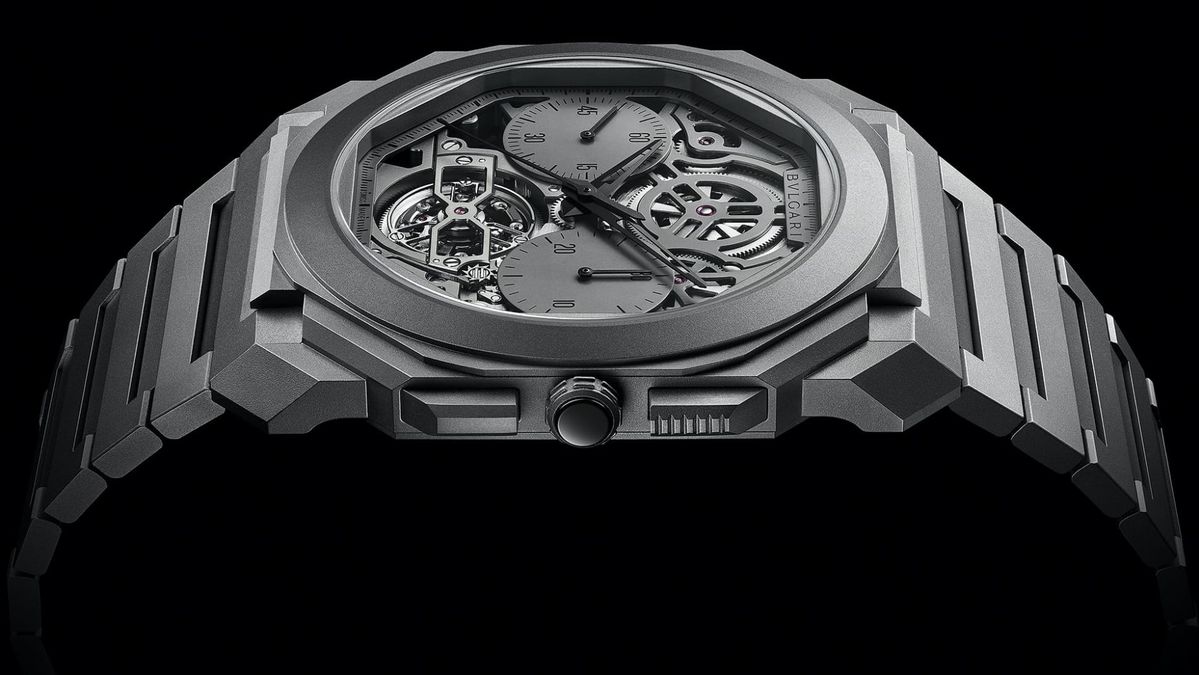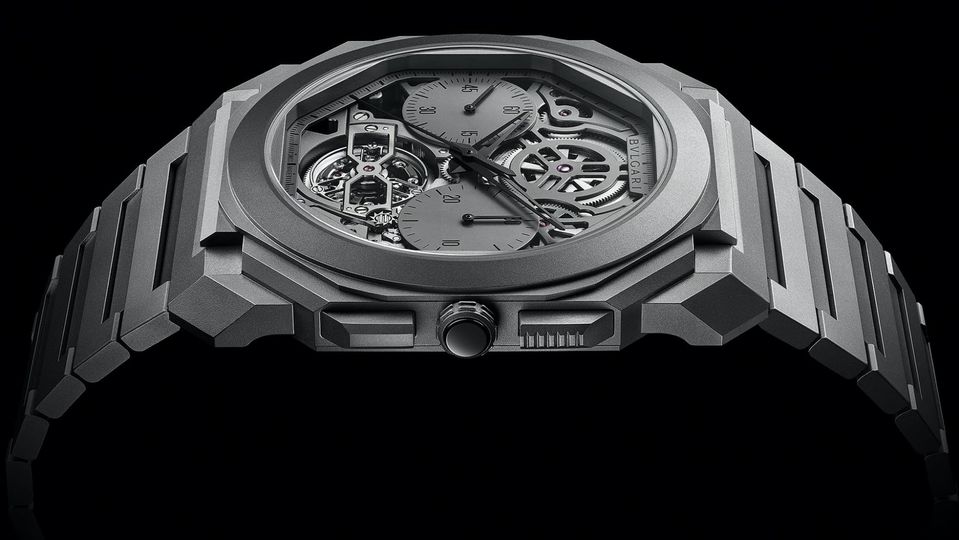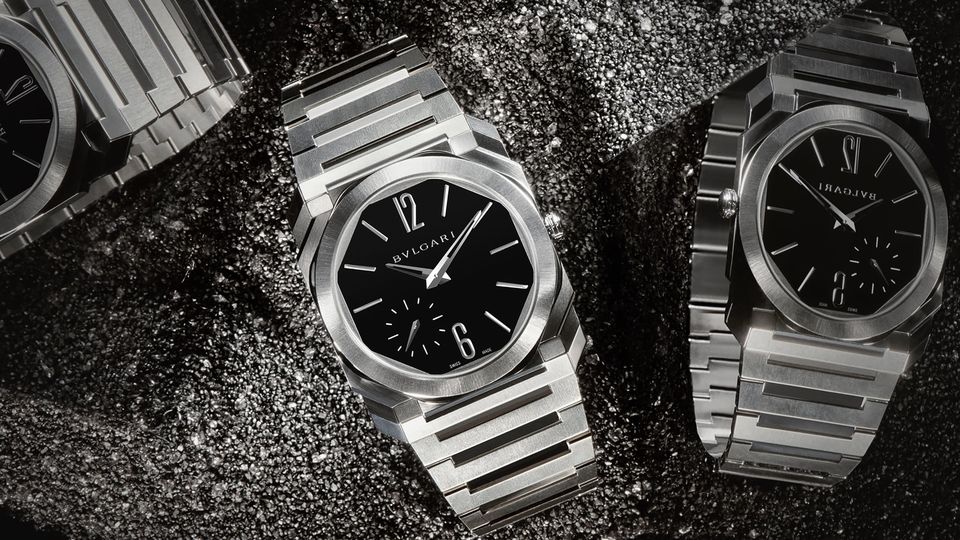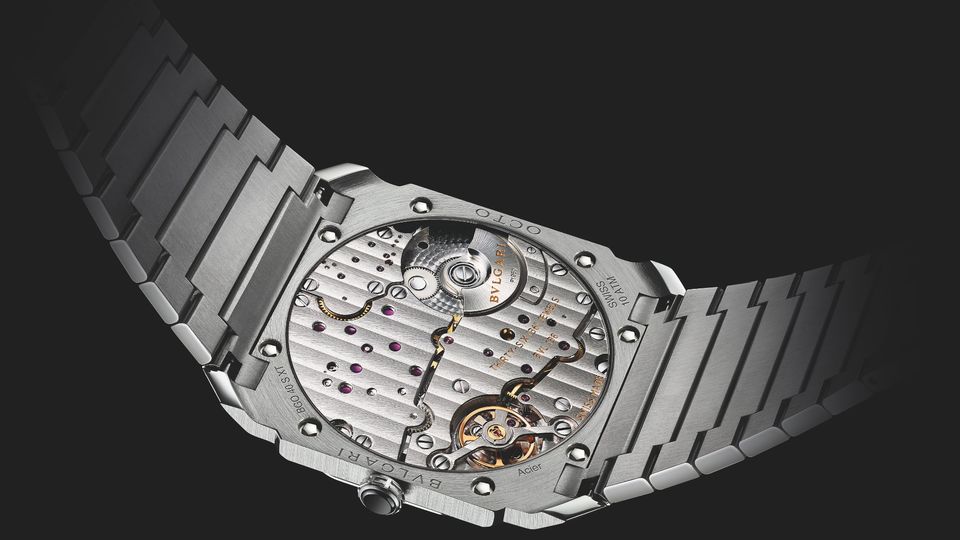The barely-there brilliance of the Bvlgari Octo Finissimo
Don't judge the Octo Finissimo by its polished looks or ultra-thin profile alone: there's some brilliant engineering at play here.

Most people consider Bvlgari is an opulent lifestyle brand, conjuring images of Elizabeth Taylor's dripping jewels, floral fragrances and a general attitude of La Dolce Vita that is entirely in keeping with the Roman Jeweller.
And yes, it is all these things, but it's also more: because Bvlgari also has a base of operations in the quietly industrious Swiss town of Neuchâtel, which looks after its watchmaking.
This elevates the brand far beyond wafty and ephemeral notions of being an exercise in dainty women's watches covered with gems. Case in point: Bvlgaeri's breathtakingly complex men's watch family, the Octo Finissimo.
The Octo part of the family name shouldn't be too hard to work out – it refers to the loosely octagonal case shape, which, in turn, informs the overall mood of angles and facts.
On a supercar, this sort of geometry would be seen as aggressive, but on the much smaller and less aerodynamic wrist-sized real estate it comes across as architectural,
This shape has been part of Bvlgari's line-up for a long time now, but it took the addition of the Finissimo to take its final form, and that was to dominate the world of ultra-thin watches.
Making a hardwearing mechanical object exceptionally slender is quite an engineering feat, something that seasoned watchmakers treat as a challenge akin to the most demanding of complications, simply because there is no room for error
If you're crafting a tourbillon, a perpetual calendar or a what have you, there's no reason you can add another millimetre here or there.
But on an ultra-thin watch, the whole point of the exercise to do as much with as little space as possible, all while having to make something that is both functional, and wearable.
This punishing combination of criteria perhaps explains why so few brands have historically specialised in the area. And, for the longest time, Piaget was the king of thin. Launching the incredibly slender manually wound 9P movement (which clocked in at only 2mm) back in 1957, and dominated the space ever since.
That changed in 2014, when Bvlgari announced the manually winding Octo Finissimo in 2014, powered by a 2.3m mm thin movement.
This was the opening salvo in a campaign for Bvlgari to take the slender crown. An incredibly complex minute repeater followed up in 2016, where the entire chiming watch measured 6.9mm – a new record.
Bvlgari followed up in 2017 with the broadside: the Octo Finissimo Automatic. It's a watch that has come to define the brand's newfound sense of energy and horological purpose.
Not only did the 5.15mm case and 2.23mm thin automatic movement again break records, but the distinct visual aesthetic of the sandblasted grey titanium case made thin watches cool, rather than delicate dress pieces.
Equally avant-garde steel, gold and ceramic versions followed, showing that Bvlgari was very much on a roll.
In 2019 the brand dropped the mic again, with the Octo Finissimo Chronograph GMT, which set a new record for a thin automatic chronograph. The movement was 3.3mm, and the whole watch is 6.9mm.
At this point, the brand was risking thin fatigue setting in, but the ingenuity of the engineers still managed to surprise and delight.
Not only had they crammed hundreds of parts into a space around the size of a fifty-cent coin, but they had done it in style. A peripheral mass was used for the automatic winding, and even added a second time-zone into the equation, just because they could.
This year Bvlgari's march continues, as it introduced a new look on the Octo Finissimo Automatic. Bvlgari added satin-polished steel and black polished and sandblasted ceramic variants.
While the matt finishes of the first generation where stunning, the look was a little polarising for some, while these versions are far more crowd-pleasing.
Alongside these more 'entry-level' (yes, we're in a part of the stratosphere where a $17,800 watch is considered 'entry') pieces, Bvlgari also flexed its creative and technical muscles again with the Octo Finissimo Tourbillon Chronograph Skeleton Automatic.

This watch adds complication on complication in another record-breaking watch (this movement is 3.5mm thin, and the whole case is 7.4mm) that Bvlgari has, just for the aesthetic sake of it, executed in a gorgeous open-worked style.
From 2014 to 2020 and beyond, Bvlgari's ascension to the peaks of ultra-thin supremacy has been as rapid as it is astounding. Today these watches place the brand as among the most accomplished and technical makers around.




Hi Guest, join in the discussion on The barely-there brilliance of the Bvlgari Octo Finissimo